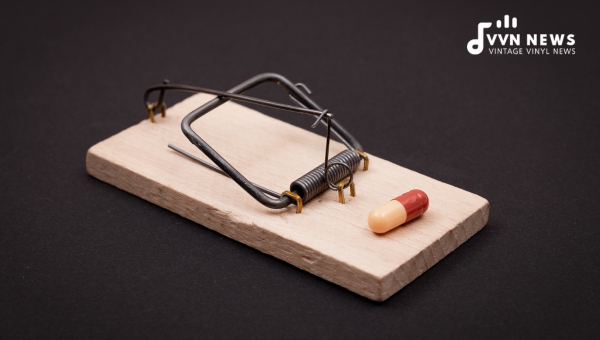Home studios have become a crucial part of the music industry these days. For both professional musicians and those just getting started, nothing compares to the convenience and comfort of having a creative space right in your own home.
One critical aspect that often gets overlooked in such DIY set-ups is ‘bass traps.’ Accurate listening is essential for music production, and controlling room acoustics is key to achieving that.
As a musician myself, I’ve faced challenges with room acoustics too. There was a period when I struggled with distorted sound production because my home studio wasn’t equipped with bass traps.
They function by absorbing low-frequency sounds which can bounce off walls and ceilings, muddying the overall sound quality. Investing in bass traps can make all the difference in creating a soundproof room that provides true sonic clarity.
Understanding Sound Reflection and Absorption
Sound behavior in a room comes down to two primary characteristics: reflection and absorption. Sound reflection is the rebounding of sound waves when they hit a hard, non-porous surface like walls, ceilings, or floors.
This bouncing back leads to reverberations that can distort the sound quality within a room. When we speak or play music in such rooms, sounds perform an audio version of ‘ping pong.’
Notably, the low-frequency sounds aka bass sounds, are most pervasively reflective due to their long wavelengths. Sound absorption is what takes place when sound waves hit material that can soak them up thereby reducing their echo within a room.
Certain surfaces and materials absorb specific frequencies better than others. For instance, high frequencies are efficiently absorbed by the foam material.
Low-frequency sounds necessitate denser materials for absorption which brings us to the concept of bass traps.
Bass traps function as absorbers for low-frequency sounds in your room. These come in various shapes and sizes depending on how and where they’re meant to be used.
These two concepts – sound reflection and absorption – are imperative while designing any area where sound is of high importance; hence must be considered judiciously while setting up a music studio or home theatre.
What Are Bass Traps?
Bass traps are devices used to enhance the sound quality within a room by absorbing low-frequency sounds. They ensure that these sounds do not cause prolonged resonances or muddiness in the audio output.

Bass traps are typically installed in the corners of a room where bass build-up is most prominent. They consist of materials that are denser and thicker than regular acoustic foams to absorb ‘bass’ frequencies more effectively.
Moreover, they come in two main types: broadband bass traps and tuned bass traps. Broadband Bass Traps absorb a wide range of frequencies, while tuned ones are designed to absorb specific frequencies.
Hence, depending on the requirements of your space, you can select a suitable type.
Importance of Bass Traps
Bass traps serve a quintessential role in managing room acoustics, particularly the problematic low frequencies.
Primarily, they contribute to enhancing the clarity and accuracy of sound projection; making it vital for spaces where precise sound reproduction is crucial such as audio recording studios, home theaters, or any room meant for music appreciation.
- Stabilizing Low Frequencies: The ability of bass traps to control bass buildup makes them indispensable for accurate sound production and listening. Without them, the bass can be inaccurate and distorted as low frequencies can linger and bounce excessively around the room due to their long wavelengths.
- Reducing Echo: Bass traps effectively reduce echo by absorbing those pesky low-frequency sounds thereby creating a more pristine listening environment.
- Boosting Sound Clarity: By managing the bass response, these acoustic elements help to boost overall sound clarity making each note distinguishable and balanced.
- Improving Recording Quality: For musicians and audio engineers, having an optimally treated space is pivotal for recording quality soundtracks.
In essence, installing absorbers like bass traps helps in achieving a ‘controlled’ room one where sounds are accurately reflected, absorbed, and diffused leading to an optimally balanced sound environment.
Also Read: How To Transpose Treble To Bass Clef [Music Guide]
Types of Bass Traps
There are primarily two types of bass traps that you should become familiar with to enhance the sound quality in your space.

Broadband Absorbers
Also known as porous absorbers, broadband traps are so named because they absorb a broad range of frequencies, from low to high, effectively acting as a wide-spectrum solution for soundproofing a space.
They’re typically made from dense insulation materials like mineral wool or fiberglass. Broadband absorbers are packed into various types of encasements – from cloth sacks to wooden frames.
The benefit of broadband absorbers lies in their versatility. They can effectively trap both high and low-frequency sounds which makes them incredibly useful in diverse settings.
On the downside, while they can handle an array of frequencies, they may not be as effective on extremely low frequencies unless used in substantial quantities or thicknesses.
Tuned Membrane Traps
Unlike their broadband counterparts that address a wide frequency range, membrane traps also known as panel or resonant absorbers are designed to specifically target lower frequencies.
They consist of a tightly secured membrane over an enclosed air space that vibrates sympathetically with certain sonic frequencies, thereby absorbing these sounds.
Tuned membrane traps are deliberately tuned to specific lower ranges by adjusting their design such as altering the stiffness or size of the membrane or the volume of the air cavity behind it.
Their key advantage is efficient absorption at specific low frequencies that even bulkier broadband absorbers can sometimes struggle with.
This precision also limits their utility across varied frequency bands – making them less versatile than broadband absorbers.
When selecting which bass trap is the best fit for your audio environment, consider room size and shape as well as what kind of sounds will be most common within it- such as “booming” bass from speakers versus more nuanced tones from musical instruments, or even spoken word performances.
Placement Strategies for Bass Traps
When it comes to optimizing sound quality, the placement of bass traps is as crucial as the traps themselves.
Let’s go over some key points that can make a massive difference to your room’s acoustics.
Corners
The corners are typically where most low frequencies congregate. Hence, they are prime locations for placing bass traps. Both vertical and horizontal room corners can benefit significantly from their installation.
Reflection Points
Identifying the early reflection points is another strategic placement strategy for bass traps.
You can think of early reflection points as areas in your room where sound bounces directly from the sound source to your ears without hitting any other side.
Ceiling and Wall Junctions
These points are also frequent hotspots for problematic low frequencies. Adding bass traps here can further ensure you’re catching as many unnecessary echoes as possible.
Regardless of where they’re placed, having a bass trap is better than not having one at all!
Whether they’re elegantly built into your studio or temporarily affixed according to need, the critical factor is their presence.
A well-set bass trap can be aesthetically pleasing while highly functional – ensuring an accurate representation of sound.
Also Read: Best Bassists Of All Time [Feel The Rhythm With These Icons]
Bass Traps in Different Settings
Let’s delve into how bass traps can be utilized in diverse settings, from personal studios to grand commercial recording spaces.

Home Studios
Home setups have rapidly proliferated recently as a desirable choice for creative artists. But what these DIY setups often lack is an acoustically sound environment. Bass traps come into play here.
Absorbing those stubborn low frequencies that contribute to a booming echo, improves the overall sound clarity in your home studio.
Corners are particularly prone to bass build-ups; therefore, priority should be given to these areas while placing bass traps.
Though broadband absorbers are usually recommended for home studios, using a mix of trap types can give a more balanced result.
Home Theaters
Perhaps you desire not to produce music but merely enjoy it or watch movies within the comfort of your abode!
The experience of clear and undistorted audio dramatically elevates this activity. High-quality bass traps can control echoing low frequencies and result in richer and tighter sounds from movies or music.
They can be placed across surfaces like behind speakers and corners of the room to alleviate boomy audio issues.
Commercial Recording Studios
Compared to home setups, commercial recording spaces have higher stakes involved; hence, requiring meticulous attention towards optimal acoustic treatment.
Here, you might use multiple types of bass traps such as panel absorbers, resonant absorbers, or diffusion-based bass traps.
Panel absorbers will typically cover wider frequency ranges while resonant absorbers deal with specific troublesome frequencies.
Diffusion-based bass traps, on the other hand, use geometrically shaped panels for scattering sound energy instead of absorbing it entirely.
For all environments, monitor room sounds before installing treatments so that the determination of problem areas is accurate – this could save both time and resources.
Common Mistakes to Avoid When Using Bass Traps
Setting up a soundproof studio or room equipped with bass traps can turn out to be quite an investment.
To get a maximum return on your investment, it’s crucial to avoid certain common mistakes.
- Random Placement: One of the most common mistakes people make is not paying attention to where they’re placing their bass traps. The position and alignment of the bass trap play an important role in how effective it can be. The best spots to place them are usually in the corners of the room where bass frequencies tend to build up the most.
- Not Taking Room Dimensions into Account: A one-size-fits-all approach doesn’t work when it comes to sound control. The size and shape of your room have an enormous impact on how sound behaves within it. Hence, using bass traps needs careful planning based on your specific room dimensions.
- Ignoring Ceilings & Floors: Acoustics is a complicated science. While focusing on the four walls is essential, don’t forget about your ceiling and floor – these surfaces can also reflect bass frequencies and affect overall sound quality.
When everything is set up correctly, you can easily hear (and appreciate) the difference that a good set of well-placed bass traps can make in your recording or listening environment.
Selecting the Right Bass Traps for Your Space
When it comes to selecting the right bass traps, several factors are crucial.

- Room Size: Larger rooms require more bass traps due to the considerable amount of space for sound waves to reflect and create distortion.
- Frequency Focus: It’s important to identify which frequencies are most problematic in your room. For this, you might want to use acoustic measurement software which can help pinpoint the troublesome frequency areas.
- Material & Design: Broadband absorbers work great for most home studios as they handle a wide range of frequencies but if you’re dealing with specific low-frequency issues, consider membrane or resonance bass traps.
- Placement: The efficacy of bass traps is also determined by correct placement. Typically, they’re placed in corners where walls meet as these are hotspots for low-frequency build-up.
Also Read: 27 Best Bass Songs [Experience The Deepest Grooves Of Music]
FAQs
What are bass traps used for?
Bass traps are used to absorb low-frequency sound waves and minimize echo, resulting in clearer sound quality and reducing unwanted resonances in a musical space.
Where should I place bass traps in my studio?
The most effective places for bass traps are the corners of your room; this is where low-frequency sounds tend to accumulate. You can install them either on the floor, at wall joints, or at ceiling corners.
Are bass traps necessary for home studios?
Yes. While larger studios have more space to scatter sound energy, home studios usually face problems with lower frequencies due to being smaller and having confined walls closer together. Bass traps help mitigate this problem.
Can I make DIY bass traps?
Absolutely! Plenty of instructions are available online on how to create your bass traps. Quality can vary enormously depending on the materials you use – so choose wisely.
Are there different types of bass traps?
Yes, typically there are two types – broadband absorbers which work across a range of frequencies (including low ones), and tuned membrane traps specifically targeting specific frequencies.
Conclusion
Using bass traps effectively is an art as well as a science. It’s all about understanding the reflections and resonances of sound in your space. Experiment with placements, types, and sizes until you find what works best for you.
Remember, every room has its unique acoustic characteristics and requires an individualized approach for optimal sound quality.
Therefore, investing in bass traps and learning how to use them could make your music or home theatre pursuits much more enjoyable and professional.








